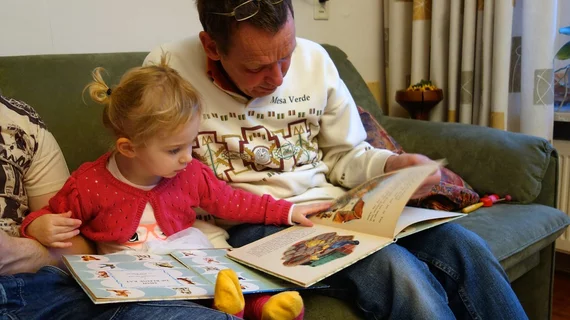fMRI finds kids are best stimulated by traditional storybooks—not audio or animation
When it comes time for a bedtime story, 3- to 5-year-olds benefit most from traditional picture books and less from audio-only or animated alternatives, NPR has reported.
Research led by John S. Hutton, MS, MD, of Cincinnati Children’s Hospital found that, after exposing 27 young children to three different types of storytelling while they underwent fMRI, a child’s visual perception, imagery, default mode and language brain networks were most interconnected when reading a physical storybook with illustrations and a voiceover.
Hutton explained the results of the study as a “Goldilocks effect”—each of the methods was either “too hot,” “too cold” or “just right.” Audio-only storytelling was on the cold end of the spectrum, which appeared to activate the kids’ language networks but saw less connectivity in the brain. On the other hand, animated storytelling over-activated audio and visual networks, but the language network struggled to keep up.
“Our interpretation was that the animation was doing all the work for the child,” Hutton told NPR. “They were expending the most energy just figuring out what it means.”
Traditional storytelling was “just right,” he said. Instead of paying attention to only words or being overstimulated by audio and visual components, the still images served as clues that aided a child’s comprehension.
Though not every parent can read to their child at all times, Hutton said opting for a stripped-down e-book without too many frills would be the best alternative.
Read NPR’s full report here:

